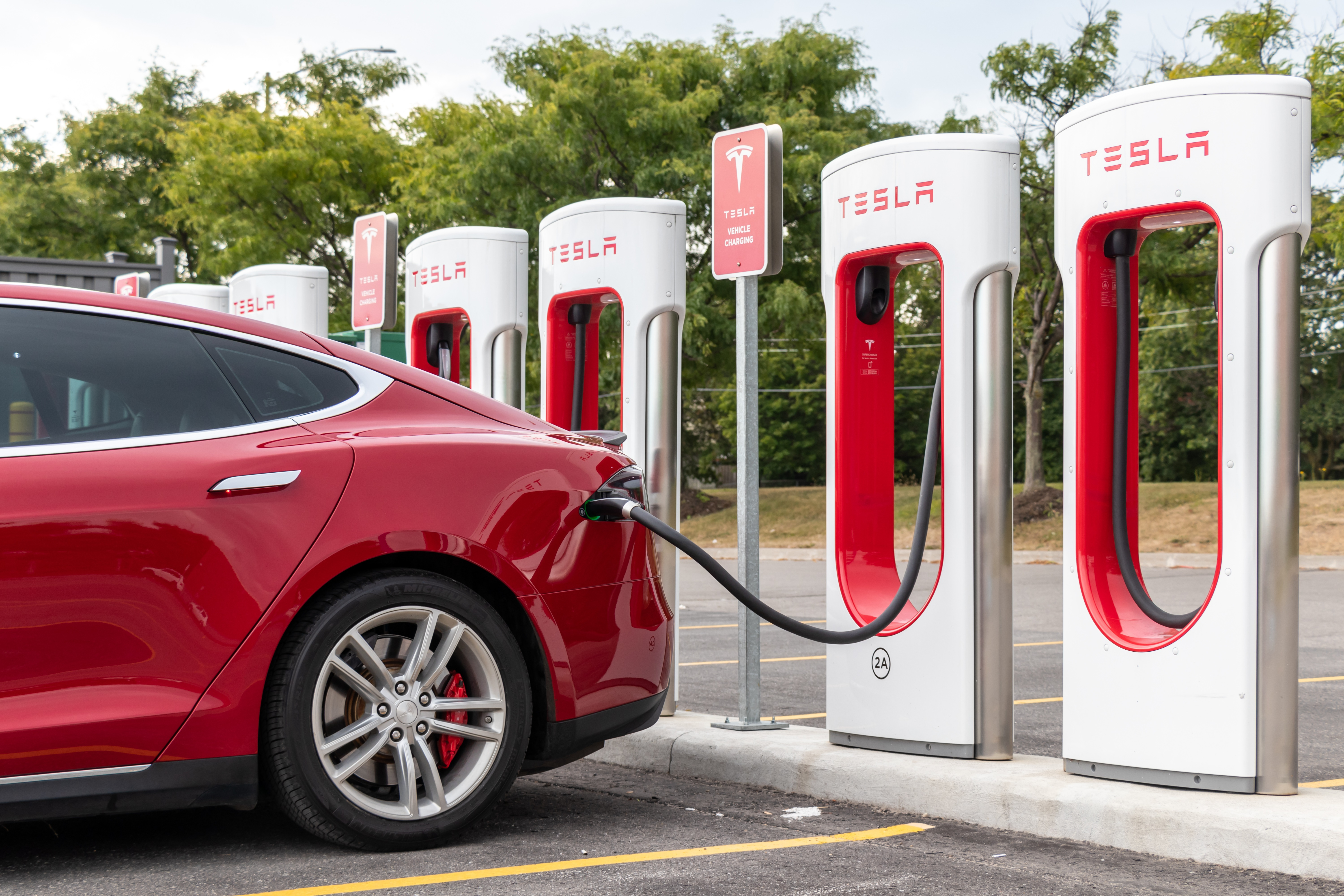Tesla just announced a milestone that could be a tipping point for electric cars
Electric car charging is getting better — and Tesla Supercharger is leading the way

It doesn’t matter how you feel about Tesla, or the man in charge of the company. There’s no denying how impressive the Tesla Supercharger network is. The sheer scale of things is especially impressive, and it looks like Tesla isn’t slowing down its expansion anytime soon.
According to Tesla’s Q2 earnings call it constructed 247 new Supercharger stations, with a total of 2,508 individual charging stalls. As Inside EVs notes, the number of new locations is 8% lower than this time last year, but the number of new chargers is 5% more.
Combined with the fact Tesla has been ending Supercharger exclusivity, and allowing non-Teslas to use the network, means this amount of growth could be the tipping point for electric car charging infrastructure.
Overall, Tesla has 3,971 Supercharger locations across the world, with 36,165 individual chargers. That’s an average of 9.1 chargers at each location, which is more than some of the competing charging networks can say, and means there’s a much better chance of there being a free Supercharger bay when you arrive.
The only downside to this news is that Tesla doesn’t specify where the new Superchargers have been built. Earlier this month it was revealed that around half the Supercharger network is made up of Chinese and European chargers, with a respective 1,200 and 800 locations.
By the end of last year Tesla had around 1,200 Supercharger locations in the United States, and its map shows that new locations are due to open over the course of the next year. So it’s not as though Tesla’s home turf is missing out on account of the automaker’s international ambitions.
But if you are after a Supercharger, you will be better off being near big cities, or closer to the east and west coasts of the country. That’s where the highest concentration of Supercharger locations seem to be. Because that’s where all the people (and cars) tend to be.
Get instant access to breaking news, the hottest reviews, great deals and helpful tips.
Tesla is leading the way
Geography aside, the expansion of the Supercharger network is showing exactly how fast we can adapt to the growing popularity of electric cars. Chargers may not have the same numbers of time convenience as gas stations, but that is changing — and quickly.
The key example is that the number of Supercharger stations and individual chargers is up by 34% since this time last year. Plus, those chargers are slowly losing their exclusivity, and this growth will benefit all EV drivers — not just the ones that own Teslas.
The move to open Superchargers to non-Teslas has already started in Europe and is expected to start in the U.S. before the end of the year. Tesla CEO Elon Musk claims it’ll eventually be the case everywhere Superchargers are found.
Tesla’s far from the only car charging network out there. Electrify America, which has 800 charging locations in North America, has announced plans to increase that number to 1,800 by 2026. That’ll offer over 10,000 individual chargers to EV drivers across the U.S. and Canada.
Meanwhile, EVgo has partnered with General Motors to install 3,250 chargers before the end of 2025. That doesn’t sound like a lot at first glance, but the original plan was to build 2,750 — meaning it's a noticeable improvement. Back in early 2020 ChargePoint also pledged $1 billion to deploy new chargers at 4,000 locations along highways and in rural areas.
In other words, it’s a great time to drive an electric car, because it’s getting even easier to find somewhere to plug in and recharge. Not to mention the fact that battery range seems to be improving with each new generation of vehicles.
Change is happening, but more can be done
Granted, there’s still plenty that can be done. Move away from the big cities and off the major highways, and EV charging infrastructure seems to be severely lacking.
Looking at PlugShare’s map of EV chargers shows just how problematic this is in places. States like Montana, North Dakota and South Dakota do have EV charging infrastructure, but there are still huge areas of all three states without a single publicly-available car charger.
Somehow I doubt that they have the same trouble with gas stations, and it shows that as far as EV charging infrastructure has come more still needs to be done — even for basic access.
Charging speed is also something to worry about, because recharge times aren't as fast as filling up a tank of gas. But things are improving pretty rapidly. Some cars are capable of handling charging speeds up to 350kW, and Tesla itself is said to be upgrading Superchargers to handle even faster speeds.
Currently V3 Superchargers top out at 250kW, while V2 Superchargers come in at 150kW. According to recent reports Tesla is set to upgrade that top speed to 300kW in the near future, or if some rumors are to be believed 324kW. Not to mention the fact that upgraded V4 Superchargers are also supposedly on the way.
It’s going to take a bit of time before we’re at the point where charging is as ubiquitous and convenient as gas stations currently are. But enough progress is happening to give us something to be hopeful for.
Read next: Plans for Tesla's first V4 Supercharger have been revealed, and it includes solar panelling and a Megapack storage battery

Tom is the Tom's Guide's UK Phones Editor, tackling the latest smartphone news and vocally expressing his opinions about upcoming features or changes. It's long way from his days as editor of Gizmodo UK, when pretty much everything was on the table. He’s usually found trying to squeeze another giant Lego set onto the shelf, draining very large cups of coffee, or complaining about how terrible his Smart TV is.
